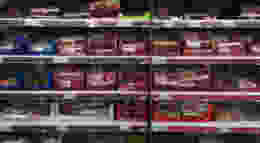
AI Visual Inspection: The critical next step in pharmaceutical safety
In August 2021, Japan suspended the use of approximately 1.63 million doses of Moderna's COVID-19 vaccine after discovering stainless steel contamination in multiple vials. The incident made international headlines when three men who had received doses from potentially contaminated batches died.
The official statement from the Japanese Ministry of Health said that a manufacturing error caused the contamination, with the pollution by foreign substances, and also from incorrectly inserted needles – vial coring.
Whilst the tragedy sparked widespread debate about vaccine safety and fuelled online discussions about pharmaceutical quality control, it illuminated a much broader and persistent challenge that extends far beyond COVID-19 vaccines: the inadequacy of current visual inspection systems in ensuring drug safety.
The COVID-19 pandemic may have brought pharmaceutical contamination into the mainstream spotlight, but the underlying inspection vulnerabilities remain largely unchanged. Just last year, the FDA issued a warning letter to an Indian pharmaceutical company for failing to adequately investigate glass particulates found in their drug products - a stark reminder that contamination issues persist across the global pharmaceutical supply chain.
These incidents are not isolated anomalies but symptoms of a systemic problem rooted in the limitations of traditional visual inspection methods and technology. For example, current standard inspection machines operate on pre-programmed parameters, designed to detect specific, known contaminants based on predetermined characteristics such as size, shape, and optical properties. This approach creates a fundamental vulnerability: these systems can only identify what they have been explicitly programmed to find.
When a novel defect or unexpected contaminant emerges – such as an insect fragment or metal debris - traditional inspection systems fail to flag it as problematic.
This technological blind spot represents an unacceptable risk in pharmaceutical manufacturing, where even microscopic contamination can have life-threatening consequences. The current approach essentially assumes that manufacturers can anticipate every possible type of contamination - an assumption that has proven dangerously false.
Unlike traditional inspection systems that rely on rigid programming, AI-powered visual inspection tools utilise machine learning algorithms that can identify anomalies without being explicitly programmed for each specific type of contaminant. These systems analyse visual patterns, textures, and characteristics across millions of data points, developing the capability to recognise when something appears abnormal, even if that abnormality has never been encountered before.

The key advantage of AI visual inspection lies in its adaptability and learning capacity. Rather than searching for predetermined defects, AI systems establish baseline parameters for what constitutes a normal, uncontaminated product and flag any deviation from these standards. This approach enables detection of glass particles, metal fragments, organic matter, discoloration, structural irregularities, and other contaminants regardless of whether they match a pre-existing detection profile.
Furthermore, AI systems continuously improve their detection capabilities through online self-supervised learning, becoming more sophisticated and accurate over time. Each inspection cycle provides additional data that enhances the system's ability to identify subtle contamination that human inspectors or traditional machines might miss.
The pharmaceutical industry's adoption of AI visual inspection should not be viewed as an optional upgrade but as an essential evolution in patient safety standards. The stakes are simply too high to continue relying on inspection technology that operates with known blind spots. When contaminated medications reach patients, the consequences extend beyond individual health impacts to include eroded public trust in pharmaceutical safety, regulatory scrutiny, costly recalls, and potential legal liability.
Drug manufacturers must recognise that in an increasingly complex manufacturing environment - with global supply chains, diverse raw materials, and sophisticated production processes - contamination risks are evolving beyond the scope of traditional inspection capabilities. The emergence of novel contaminants, as demonstrated by recent high-profile cases, demands equally sophisticated detection technology.
The transition to AI-powered visual inspection represents more than a technological upgrade; it embodies a fundamental shift toward proactive, comprehensive quality assurance. Rather than waiting for the next contamination crisis to expose the limitations of current systems, pharmaceutical companies should take the initiative to implement AI visual inspection as the industry standard.
The time for incremental improvements to outdated inspection systems has passed. The pharmaceutical industry must embrace AI visual inspection as the new standard, helping to ensure that past contamination tragedies become catalysts for lasting safety improvements rather than forgotten warnings of preventable risks.

Yuting is Director at international pharmaceutical machinery provider, Xin Weisheng. She is a passionate serial entrepreneur with over 11 years of experience delivering customised solutions to global pharmaceutical clients.














